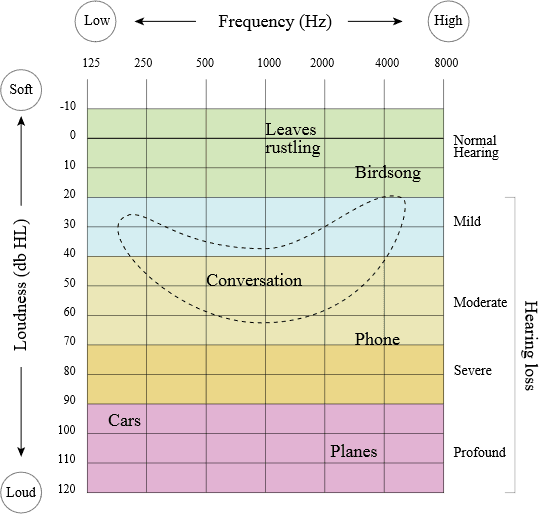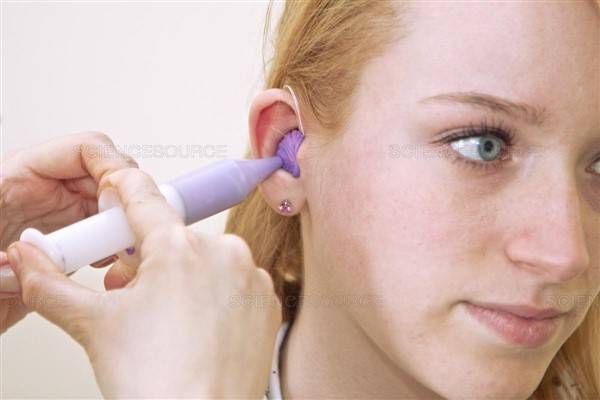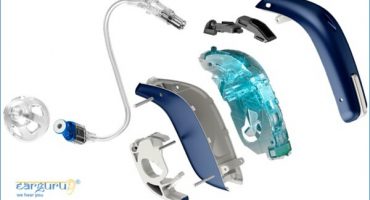The Audiologist has conducted the necessary hearing loss tests on you, and to your surprise, the reports show that you need hearing aids.
The truth is that most of us will need hearing aids at some stage in life. If this is your first hearing aid, you should know a little about the process of hearing aid fitting. So let’s get familiar with the process of hearing aid fitting.
Table Of Contents
- Selecting Hearing Aids
- Can I Select the Hearing Aid I like?
- Ear Impression For Earmold Fitting
- Tuning Or Programming The Hearing Aids
- Expectations From Your First Hearing Aid Fitting
- Adjusting To Your New Hearing Aids
- Hearing Aid Adjustment Period
- Understanding Hearing Aid Features
- Hearing aid Maintenance Tips
What Is Hearing Aid Fitting?
Getting fitted for hearing aids takes a few hours and sometimes involves more than one visit to the audiologist. The hearing aid fitting procedure starts with the evaluation of the audiogram report, to walking out with your new hearing aids. Below is a brief description of the usual stages of the hearing aid fitting procedure.
- Selecting hearing aids
- Earmold Impression
- Programming the hearing aid
- Adjusting To Your New Hearing Aids
Selecting Hearing Aids
There is a wide range of hearing aids with different specifications and styles. It is best left to the audiologist or your hearing aid fitter to recommend the right one based on the audiogram. The audiogram displays the frequencies on one axis and hearing loss in decibels (the unit of intensity or loudness of sound) on the other axis.

The audiologist will conduct a pure tone audiometry test and mark the results on the audiometry chart. Knowing the exact hearing loss at each frequency is an important part of the hearing aid fitting procedure.
Different hearing aid styles and models have different technical specifications and fitting ranges. The manufacturers provide the technical specifications to the audiologist along with the programming software. This helps them in fitting and dispensing hearing aids.
It is advisable to have a discussion with the hearing aid fitter before the hearing aid fitting process starts and convey your budget or the preferred hearing aid price range. This will simplify the selection process.
Can I Select the Hearing Aid I like?

Once the price range is finalized, the next step would be to select the type of hearing aid you prefer. When it comes to the style or type of hearing aids, you, the user has to play a pro-active role in the selection process.
Sometimes, the hearing aid you like is not suitable, you prefer a small invisible hearing aid, but your ear canal is too narrow for this type.
Discuss your needs and requirements with the audiologist before the hearing aid fitting process starts. Your lifestyle is an important factor in the selection process. If you are a working professional, you will prefer a hearing aid that is not visible. If your work involves talking to clients on the phone, you will prefer a hearing aid with Bluetooth connectivity. Read our blog on how to choose the best hearing aid.
If you do not select the right type of hearing aid as per your lifestyle, you may not use it regularly and will not benefit from the hearing aid.
Ear Impression For Earmold Fitting
Once you select the model and the style of the hearing aid, the next step is the ear impression. The hearing aid fitter will inject a special paste into the ear. The paste fills up the ear and the ear canal and solidifies in a few minutes. This solid impression is the precise shape of your ear canal and the outer ear.

The hearing aid fitter sends the impression to the earmold or shell-making laboratory for making the final earmold. Earmolds are available in hard silicone as well as soft silicone, the earmold fitting is important as it will eliminate the chances of auditory feedback or squealing. The ear impression is also required to make a shell for an ITC, CIC, or IIC hearing aid.
If your audiologist feels that earmolds are necessary, then you will be called after a few days once they receive the fabricated earmolds. The laboratories take a few days to manufacture and deliver the earmolds. Or the complete hearing aid, if you have selected an In The Ear (ITE) type.
Tuning Or Programming The Hearing Aids
If the hearing aid fitter recommends silicone ear tips or domes, then you can immediately go to the next stage of the hearing aid fitting, that is programming. In case of mild to moderate hearing loss, an earmold may not be necessary. The hearing aid manufacturers supply standard ear tips or domes of various sizes that are used for hearing aid fitting.
Programming is a procedure to match the output of the hearing aid to your hearing loss. No two people have the same pattern of hearing loss. So, each hearing aid’s performance and output are programmed or tuned to suit the user. The software provided by the manufacturer can change the output level and the frequency response to match the user’s hearing loss.
For example, if you suffer from high frequency deafness, then the output of the hearing aid is increased in the high frequency range to make up for the deafness. The hearing aid output in the low frequency range is not increased as much if your hearing is normal or the loss is minimal in this frequency range.
Increasing the output throughout the audible frequency range will make low notes very loud and irritating. Programming is an important part of dispensing hearing aids.
Expectations From Your First Hearing Aid Fitting
You are eagerly awaiting to hear with your new hearing aids and the expectations are high, the chances are that your first experience may be disappointing.
Initially, you will hear a lot of sounds making you uncomfortable. There is nothing wrong with the hearing aids or the hearing aid fitting. These are the sounds that your ear has not heard for a long time due to your deafness. The brain takes a few days to adapt to the new sound.
Adjusting To Your New Hearing Aids
The hearing aids will sound good and you will be comfortable with them in the hearing aid fitter’s clinic. But a shock awaits you as you step out of the clinic. The noise of cars passing by or some noisy activity on the street will sound unbearable.
Do not panic, reduce the volume or switch off your hearing aids till you reach home. Our brain needs some time to process the new sounds. It will not take long before the brain starts recognizing the new sounds.
Start using the hearing aid at home, talk to your family members as you are familiar with their voice. Ask them to repeat if you miss hearing a few words. Do not ask them to talk loudly as your audiologist has increased the output to the required level.
Initially, use your hearing aids as long as you are comfortable, switch them off and remove them for some time in case you feel tired. Increase the number of hours gradually over days.
Do keep in mind that there will be a little difference between natural hearing and hearing with a hearing aid. Expecting to hear as well as before will disappoint you, get used to the new sound. You should have reasonable expectations from your hearing aids. Let’s not forget that they are electronic aids and cannot be as good as natural hearing.
Since this is your first hearing aid and you are still struggling to get used to them, we advise you to read our article on 15 Helpful Tips For Getting Used To Hearing Aids.
Hearing Aid Adjustment Period
It generally takes 2 to 3 weeks to adjust to the new hearing aids. Do not get impatient and rush back to the audiologist. You will be comfortable in a few weeks. If still not happy, make a note of all the sounds that make you uncomfortable or you can’t hear. Issues like being unable to hear the doorbell. Unable to understand the speech of your wife or your children, unable to talk on the phone or the traffic noise is too loud, etc.
Explain the issues bothering you to your audiologist, a little adjustment can solve them. Your audiologist can tune or program the hearing aids perfectly if you give them proper feedback.
Understanding Hearing Aid Features
Digital hearing aid technology has advanced rapidly. Manufacturers offer great features for the comfort and convenience of the user. Features like multi-program are helpful as you can change the hearing aid settings from loud to soft depending on your location or situation with a press of a button.
A very common problem is that one’s own voice sounds loud, this can be adjusted by reprogramming the hearing aid.
Your Audiologist will explain all the features present in your hearing aids. Make note of all the features as they will improve the hearing experience. Read our blog on the features in advance hearing aids.
Hearing Aid Maintenance Tips
Read the user manual provided by the company, your audiologist will also offer handy tips to maintain your hearing aids. Understand when and how to replace the battery and how to store the hearing aids at night. Read about the simple at home maintenance tips. to ensure that your hearing aids give you years of trouble-free service.
A proper hearing aid fitting will bring fun back into your life. Do things you always wanted to do. Go for movies, operas, listen to music.




1 thought on “What To Expect At Your First Hearing Aid Fitting”
Comments are closed.